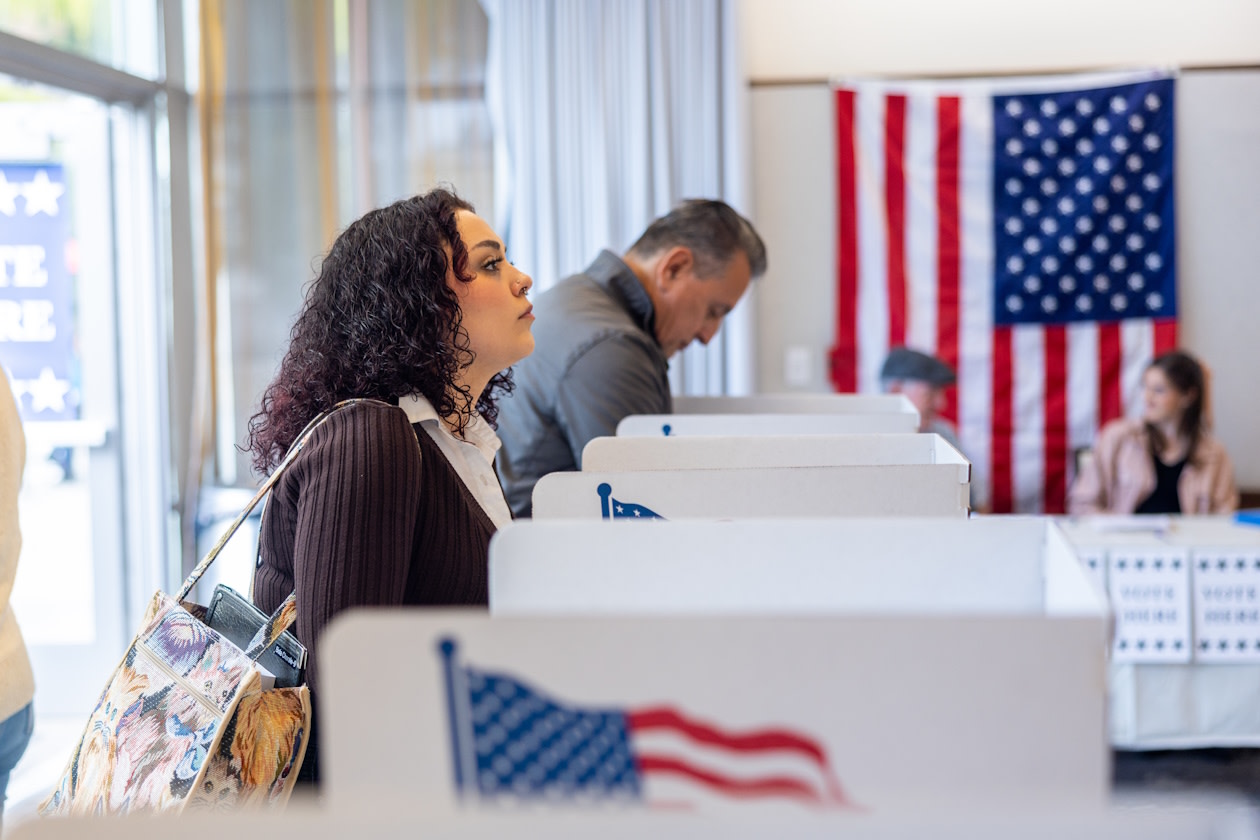The US primaries have been and gone, with voting ending in June. This is where each state votes on who it wants to represent each party on election day.
The Republicans went for Donald Trump. The Democrats went for Joe Biden.
However, for the first time in the modern era, someone chosen to represent their party on election day stepped down from the campaign.
President Joe Biden officially dropped his re-election campaign and pulled out of the 2024 US Election in July. He was then replaced with current Vice President, Kamala Harris, who is now running as the Democrat choice to be next in the White House.
While Biden’s re-election campaign was showing some weakness, it still came as a surprise. In fact, Biden is the first president since Lyndon Johnson in 1968 who has decided not to run for re-election.
How does voting work in the US?
The Electoral College
Now that each party has their nominated presidential candidate, they will go head-to-head in the election. The elections will be held on Tuesday 5th November 2024.
In the election itself, voters cast their vote for the next president, by voting for electors. This is similar to voting for your local MP in the UK.
However, the difference in the US is that whichever presidential candidate gets the most electors within a state, wins the votes of all of the electors within that state.
So, each state ends up backing one presidential candidate only. This is different to the UK election where a county might be made up of lots of MP’s representing different parties.
However, not all states are equal.
Each state has a different amount of electors, based on their population. This means that some states are more important to the race for the presidency than others.
For example, California has 55 electors while Alaska has 3.
In total there are 538 available votes for president, meaning that a majority of 270 is needed in order to win.
What’s happening in the polls?
Since Harris took over from Biden, we’ve seen the race become much closer.
According to the polls, Trump had a steady lead over Biden. However, since Harris took over the national polls have become much closer with some suggesting a small lead for Harris.
We‘ve also seen a presidential debate and a vice-president debate.
Typically, there are normally a couple of debates as each candidate tries to sway undecided voters however, this year it’s likely there will only be one.
The consensus was that Harris won the debate versus Trump quite comfortably and there was a small increase in her lead.
But the vice-president debate was more even. Republican vice-president nominee JD Vance performed much better than people were expecting.
Going into the final stretch of the race, the national polls suggest Harris has a 3% lead.
However, most states in the US vote for the same party every election and there’s only a small number of states that are known for voting for either party. These are known as the swing states and are a key battleground for the nominees.
Polls here are much closer.
Harris currently is marginally ahead in four out of the seven swing states, but her lead in Pennsylvania is less than 1%.
Trump has a marginal advantage in Georgia and Arizona, but his lead in North Carolina is also less than 1%.
It’s important to remember that polls aren’t always accurate.
In 2020 the final count in Wisconsin was 9% different to what the polls were suggesting. Any polls suggesting a lead of 2% or lower can effectively be viewed as neck and neck.
What’s next?
Voting has already started in some states and many more will be heading to the polls over the next few weeks.
The official count will start from around 7pm local time on 5 November. The winner is then usually announced on the same night. But that’s not always the case – in 2020, it took a few days.
We still have a few weeks until election day and that means there’s going to be plenty for investors to keep an eye on.
To make sure you don’t miss out on all things US Election and our latest expert US investment ideas and insights, sign up to our weekly Editor’s Choice email.
We’ll send you our top investment stories from the week every Saturday morning so you can stay up to date and on top of your investments. Remember, investments can go down as well as up in value so you could get back less than you invest.
This article isn’t personal advice. If you’re not sure if a course of action is right for you, ask for financial advice. Investments can fall as well as rise in value so you could get back less than you invest.
Investing in funds isn’t right for everyone. Investors should only invest if the fund’s objectives are aligned with their own, and there’s a specific need for the type of investment being made. Investors should understand the specific risks of a fund before they invest, and make sure any new investment forms part of a diversified portfolio.
The US makes up over half of the global stock market. It’s the world’s biggest economy and home to some of the globe’s largest companies.
The HL US Fund provides a way to invest in this powerhouse where the hard work is done for you. HL’s experts have handpicked an external team of fund managers, who pick US stocks they believe offer the best potential for long-term performance.
The HL US Fund is managed by Hargreaves Lansdown Fund Managers Ltd, part of the HL Group.
Investing in this fund isn’t right for everyone. Investors should only invest if the fund’s objectives are aligned with their own, and there’s a specific need for the type of investment being made. Investors should understand the specific risks of a fund before they invest, and make sure any new investment forms part of a diversified portfolio.




